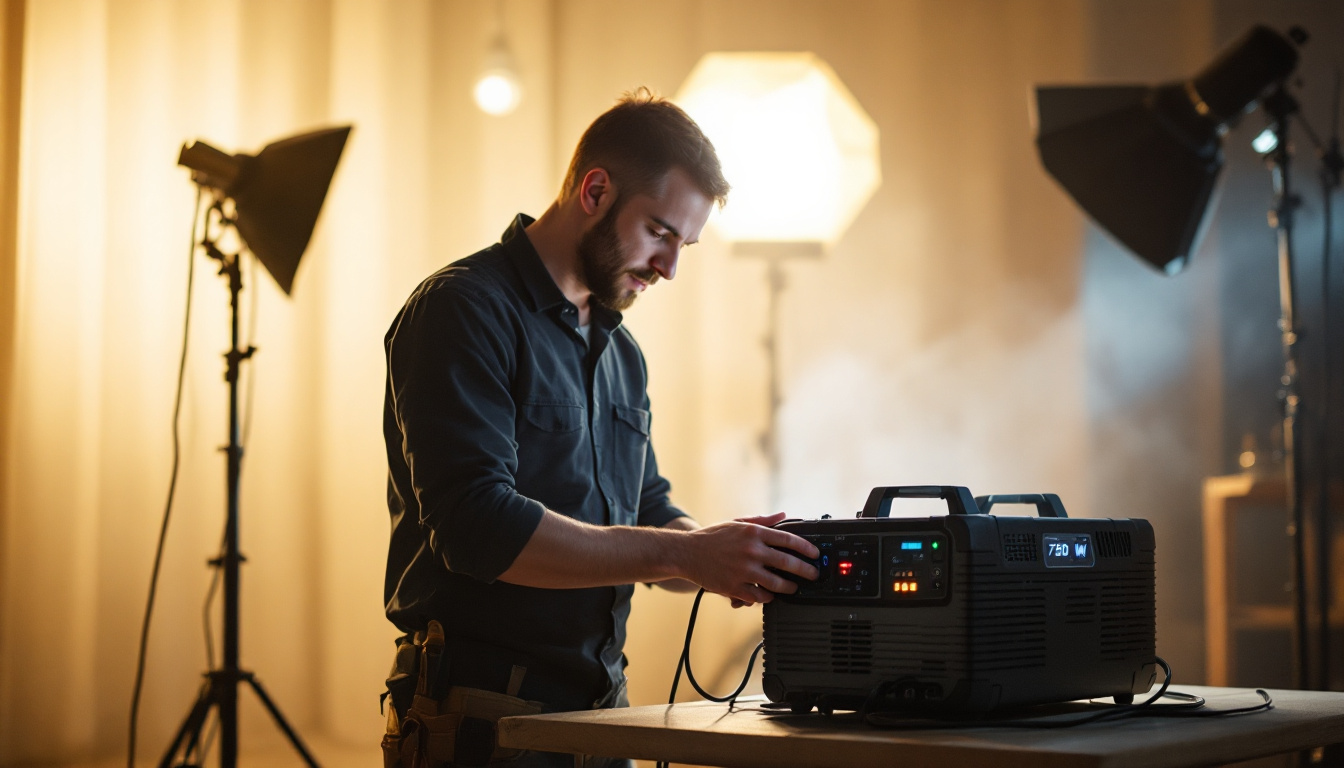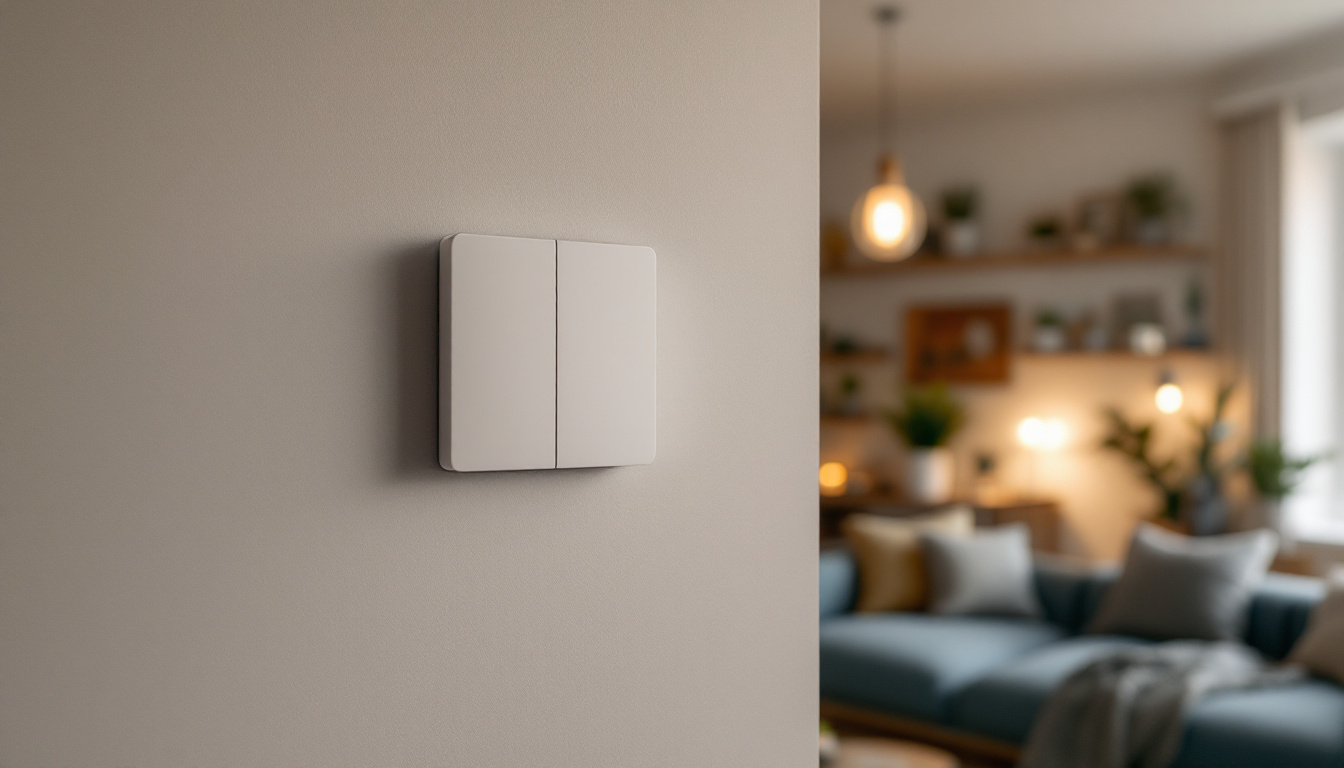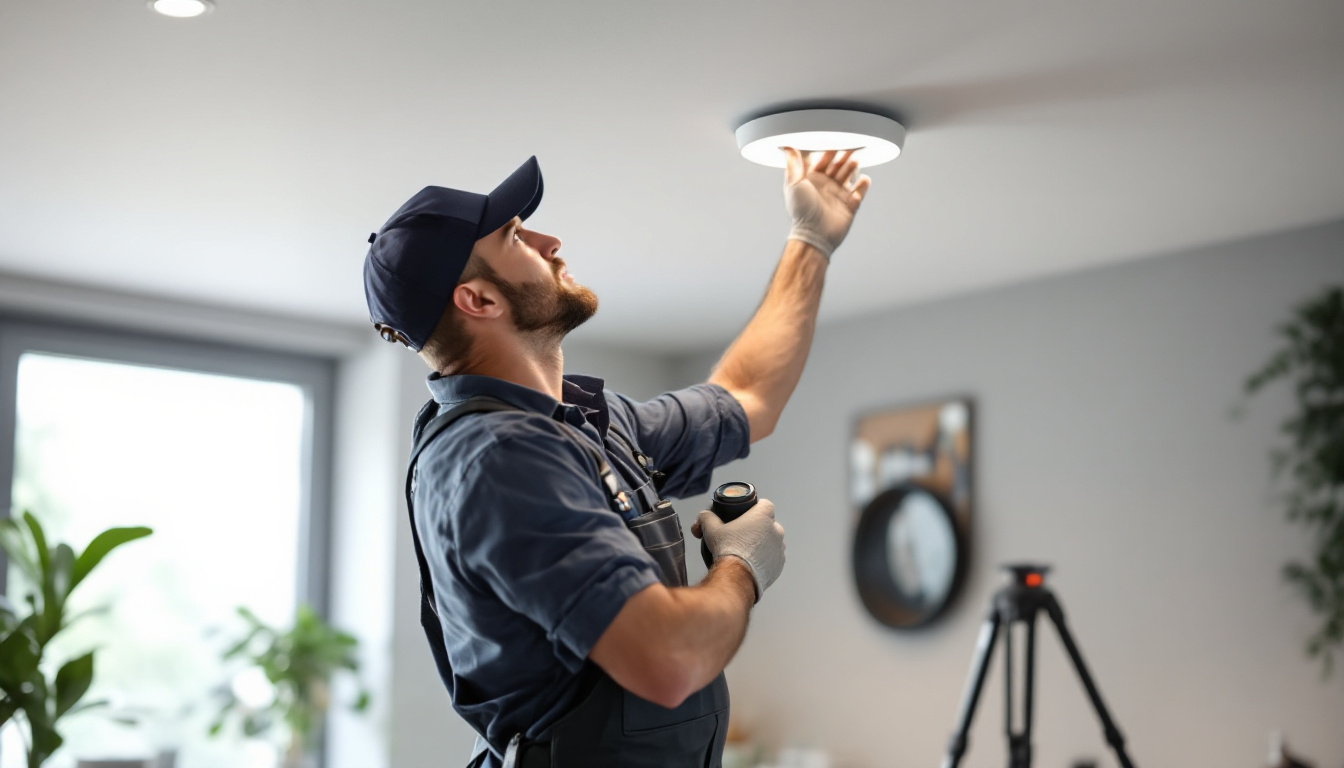
The role of a power inverter in the arsenal of a lighting contractor cannot be overstated. A 750 W power inverter serves as a vital piece of equipment, converting DC power from batteries into AC power, which is essential for running various lighting fixtures and tools on job sites. This article delves into the best practices for utilizing a 750 W power inverter, specifically tailored for lighting contractors who require reliable power solutions in diverse environments.
Before diving into best practices, it is crucial to understand what a power inverter is and how it functions. A power inverter takes the direct current (DC) from a battery and converts it into alternating current (AC), which is the form of electricity used by most household appliances and lighting systems. This conversion is essential for using battery power in applications where traditional AC power is required, such as in homes, RVs, or during power outages. The efficiency of this conversion process can significantly affect the performance of your devices and the longevity of your battery.
Power inverters come in various types, primarily categorized into modified sine wave and pure sine wave inverters. Modified sine wave inverters are generally less expensive and can power basic tools and lights, but they may not be suitable for sensitive electronics. These inverters produce a stepped waveform that can cause issues with devices that require a stable power supply, such as computers or medical equipment. On the other hand, pure sine wave inverters provide a cleaner, more stable power output, making them ideal for professional lighting equipment and sensitive electronics. They mimic the smooth wave of utility power, ensuring that all devices operate efficiently without risk of damage or performance issues.
When selecting a 750 W power inverter, several specifications should be taken into account. Look for the inverter’s continuous power rating, surge capacity, and efficiency. Continuous power rating indicates how much power the inverter can supply over an extended period, while surge capacity refers to the maximum power it can handle for short bursts, which is often necessary when starting certain lighting fixtures. For instance, some appliances may require up to three times their running wattage to start, so understanding these ratings is crucial for ensuring compatibility. Efficiency ratings will also impact battery life, as more efficient inverters draw less power from the battery. Additionally, consider the inverter’s total harmonic distortion (THD) rating, as lower THD values indicate cleaner power output, which is particularly important for sensitive devices that can be adversely affected by electrical noise.
To maximize the effectiveness and longevity of a 750 W power inverter, lighting contractors should adhere to several best practices. These practices not only enhance performance but also ensure safety on the job site.
Correct installation is paramount when it comes to using a power inverter. Ensure that the inverter is mounted securely in a well-ventilated area to prevent overheating. Additionally, use high-quality cables that can handle the current load without excessive voltage drop. The inverter should be connected directly to the battery using short, thick cables to minimize resistance and maximize efficiency. It’s also crucial to position the inverter away from any sources of moisture or dust, as these elements can compromise its functionality and lead to premature failure. If the inverter is being used in a mobile setting, consider using vibration-dampening mounts to protect it from shocks and vibrations that can occur during transport.
Understanding load management is essential for preventing overload situations. Lighting contractors should calculate the total wattage of all devices that will be powered by the inverter. It is advisable to keep the load at about 80% of the inverter’s capacity to ensure reliable performance and avoid overheating. For a 750 W inverter, this means keeping the total load around 600 W. Additionally, it’s beneficial to stagger the startup of devices, particularly those with high inrush currents, such as certain types of lighting and power tools, to prevent sudden spikes that could trip the inverter. Keeping a log of the wattage requirements for various tools and devices can help in planning and managing loads effectively.
Regular maintenance is key to ensuring the longevity and reliability of a power inverter. This includes checking connections for corrosion, ensuring that ventilation is not obstructed, and monitoring battery health. Many modern inverters come with built-in monitoring systems that provide real-time data on performance, allowing contractors to identify potential issues before they escalate. Furthermore, it is advisable to perform periodic inspections of the inverter’s internal components, especially if it has been in use for an extended period. Dust and debris can accumulate inside, affecting its performance. Cleaning the inverter with compressed air can help maintain optimal operation. Keeping a maintenance schedule can also help in tracking the performance and condition of the inverter, ensuring it remains in peak working order throughout its lifespan.
Safety should always be a top priority when working with power inverters. Proper precautions can prevent accidents and ensure a safe working environment.
Always adhere to electrical safety protocols when using a power inverter. This includes ensuring that the inverter is turned off before making any connections or disconnections. Additionally, use personal protective equipment (PPE) such as gloves and safety glasses when working with batteries and electrical components.
As power inverters generate heat during operation, adequate ventilation is crucial. Avoid placing the inverter in enclosed spaces where heat can build up. If necessary, consider using external fans to promote airflow and keep the inverter cool, especially during prolonged use.
Since power inverters rely on batteries, understanding battery safety is essential. Ensure that batteries are properly maintained, charged, and stored. Use appropriate battery types that match the inverter’s specifications, and be aware of the risks associated with overcharging or deep discharging batteries.
The versatility of a 750 W power inverter allows it to be used in various lighting applications. Understanding these applications can help lighting contractors make informed decisions on when and how to utilize this equipment effectively.
In many construction and event settings, temporary lighting solutions are essential. A 750 W power inverter can power multiple LED work lights, providing adequate illumination for tasks that require precision and safety. Whether it’s for outdoor events or indoor renovations, having a reliable power source can make all the difference.
Power inverters can also be used to create emergency lighting systems. In situations where the main power supply is disrupted, a 750 W inverter can provide backup power to essential lighting fixtures, ensuring safety and visibility. This is particularly important in commercial settings where safety regulations mandate emergency lighting.
For lighting contractors working in the events industry, portability is key. A 750 W power inverter can be easily transported and set up at various venues, allowing for flexible lighting solutions that can adapt to different layouts and requirements. This capability enhances the contractor’s ability to meet client needs effectively.
To fully leverage the capabilities of a 750 W power inverter, selecting the right accessories is essential. These accessories can enhance functionality and improve the overall user experience.
High-quality cables and connectors are vital for ensuring efficient power transfer. Look for cables that are rated for the appropriate amperage and are made from durable materials. Additionally, consider using connectors that provide a secure and reliable connection to prevent power loss or damage.
Choosing the right battery is critical for optimal inverter performance. Deep cycle batteries are often recommended for use with inverters, as they are designed to be discharged and recharged repeatedly. Lithium-ion batteries are also gaining popularity due to their lightweight and long-lasting characteristics, making them ideal for portable applications.
Investing in monitoring and control systems can provide valuable insights into the inverter’s performance. Many modern inverters come with built-in displays that show voltage, current, and load levels. These systems can help contractors make real-time adjustments to optimize performance and prevent overload situations.
Even with proper usage and maintenance, issues may arise with a 750 W power inverter. Being able to troubleshoot these problems effectively can save time and resources on the job site.
One common issue is the inverter’s overload protection feature activating. This usually occurs when the total load exceeds the inverter’s capacity. To resolve this, contractors should disconnect some devices and allow the inverter to reset before reconnecting the load gradually.
If the inverter fails to turn on, check the battery connections and ensure that the battery is adequately charged. Additionally, inspect the inverter’s fuse or circuit breaker, as these may need to be replaced if they are blown or tripped.
Inconsistent power output can be a sign of several issues, including poor connections or a failing battery. Inspect all connections for corrosion or damage, and ensure that the battery is in good condition. If problems persist, it may be necessary to consult the manufacturer’s guidelines or seek professional assistance.
In conclusion, a 750 W power inverter is an invaluable tool for lighting contractors, offering versatility and reliability in various applications. By understanding the basics of power inverters, adhering to best practices, and implementing safety measures, contractors can ensure optimal performance and longevity of their equipment. With the right accessories and troubleshooting knowledge, lighting professionals can tackle any project with confidence, knowing they have a dependable power source at their disposal.
Ready to enhance your lighting projects with the best in class equipment? Look no further than LumenWholesale for all your lighting needs. Our extensive selection of spec-grade lighting products is designed to meet the highest industry standards, ensuring you get the most reliable and high-performance lighting solutions for every project. With unbeatable wholesale prices and the convenience of free shipping on bulk orders, you can trust LumenWholesale to provide premium lighting without the premium price tag. Don’t compromise on quality or value; explore our collection today and experience the ultimate in contractor empowerment.

Discover the art of transforming gaming spaces with LED lighting in this comprehensive guide tailored for lighting contractors.

Discover how programmable light switches can revolutionize the way lighting contractors manage projects, leading to significant cost savings and increased efficiency.

Discover how recessed can light conversion kits can enhance profitability in lighting installations.

Illuminate your projects with our comprehensive guide on outdoor backyard lights, tailored for lighting contractors.